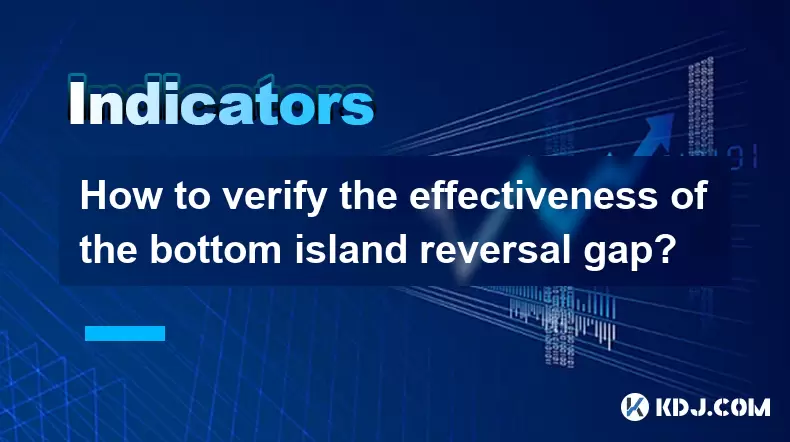-
 Bitcoin
Bitcoin $118600
0.36% -
 Ethereum
Ethereum $3855
1.06% -
 XRP
XRP $3.195
-0.09% -
 Tether USDt
Tether USDt $1.000
-0.04% -
 BNB
BNB $844.5
6.23% -
 Solana
Solana $191.3
2.83% -
 USDC
USDC $0.9997
-0.01% -
 Dogecoin
Dogecoin $0.2376
0.10% -
 TRON
TRON $0.3242
0.83% -
 Cardano
Cardano $0.8222
0.13% -
 Hyperliquid
Hyperliquid $45.26
6.53% -
 Sui
Sui $4.200
-2.56% -
 Stellar
Stellar $0.4336
-1.24% -
 Chainlink
Chainlink $18.86
0.28% -
 Hedera
Hedera $0.2796
-1.75% -
 Bitcoin Cash
Bitcoin Cash $583.3
-1.84% -
 Avalanche
Avalanche $27.06
8.09% -
 Litecoin
Litecoin $112.3
-1.16% -
 Toncoin
Toncoin $3.353
0.58% -
 UNUS SED LEO
UNUS SED LEO $8.968
-0.11% -
 Shiba Inu
Shiba Inu $0.00001395
-0.54% -
 Ethena USDe
Ethena USDe $1.001
-0.03% -
 Uniswap
Uniswap $10.76
0.69% -
 Polkadot
Polkadot $4.175
0.26% -
 Monero
Monero $326.7
1.07% -
 Bitget Token
Bitget Token $4.665
1.61% -
 Dai
Dai $0.9998
-0.02% -
 Pepe
Pepe $0.00001271
0.32% -
 Cronos
Cronos $0.1416
2.01% -
 Aave
Aave $299.3
1.15%
How to verify the effectiveness of the bottom island reversal gap?
A bottom island reversal gap signals a potential bullish reversal after a downtrend, marked by a gap down, consolidation, and a gap up, often confirmed by volume and technical indicators.
Jun 17, 2025 at 05:43 pm

What Is a Bottom Island Reversal Gap?
A bottom island reversal gap is a technical analysis pattern commonly observed in price charts, especially within the cryptocurrency market. It typically appears after a downtrend and signals a potential reversal to an uptrend. The pattern forms when there's a gap down followed by a period of sideways or slightly fluctuating prices, and then another gap up that isolates this middle section from the prior price action—hence forming an "island." This unique formation suggests a shift in market sentiment from bearish to bullish.
The importance of understanding this pattern lies in its ability to highlight turning points in asset value. For traders seeking entry opportunities at critical reversal zones, identifying a bottom island reversal gap can be crucial.
How to Visually Identify a Bottom Island Reversal Gap
Recognizing this pattern requires attention to specific visual cues on the chart:
- A clear downtrend must precede the pattern.
- There’s a gap down, creating space between the previous candlestick or bar and the next one.
- After the gap, price action consolidates for several periods without making new lows, forming what appears as a small range or cluster of candles.
- Finally, a gap up occurs, separating the consolidation phase from subsequent higher prices and completing the island structure.
These gaps should ideally have no overlap with the adjacent candlesticks or bars. In the volatile world of cryptocurrencies, such patterns may appear more frequently due to sudden price swings, so it's important to verify volume and other indicators alongside the pattern.
Confirming Volume Patterns Around the Gap
Volume plays a key role in validating the effectiveness of the bottom island reversal gap. Here’s how to assess it:
- On the day of the initial gap down, volume should be high, indicating strong selling pressure.
- During the consolidation phase (the island), volume tends to decrease, showing hesitation among sellers and possible accumulation by buyers.
- When the gap up occurs, a spike in volume confirms the buying interest and supports the likelihood of a genuine reversal.
In crypto markets, where 24/7 trading affects volume distribution differently than traditional markets, it's essential to use relative volume comparisons across similar timeframes to ensure accurate readings.
Using Technical Indicators to Validate the Pattern
While the visual structure of the bottom island reversal gap is compelling, using supporting technical tools enhances reliability:
- Moving averages: Check if the price crosses above short-term moving averages (like the 9-day or 20-day EMA) after the gap up.
- Relative Strength Index (RSI): Look for RSI rising above the 50 level shortly after the gap up, signaling strengthening momentum.
- MACD: A bullish crossover following the gap up adds confirmation to the reversal scenario.
For cryptocurrencies, which often experience exaggerated moves, combining these indicators helps filter false signals and increases confidence in the trade setup.
Backtesting the Effectiveness of the Pattern
To determine how effective the bottom island reversal gap is in real-world trading scenarios, backtesting becomes essential:
- Select historical data for major cryptocurrencies like Bitcoin, Ethereum, or Solana.
- Manually scan charts or use automated scripts to detect instances of the pattern.
- Record the price movement following each identified bottom island reversal gap over a defined period (e.g., 5–10 days).
- Measure how often the pattern leads to a successful trend reversal versus how many times it fails.
This empirical approach provides concrete evidence of the pattern's performance in different market conditions and volatility levels typical of crypto assets.
Integrating the Pattern into a Trading Strategy
Once validated, the bottom island reversal gap can become part of a broader trading strategy:
- Define precise entry rules, such as entering long positions after the gap up closes above the high of the island’s highest candle.
- Set a stop-loss just below the low of the island or the prior gap-down candle to manage risk.
- Establish profit targets based on average true range (ATR) or Fibonacci extensions to lock in gains.
In fast-moving crypto markets, strict adherence to predefined rules prevents emotional decision-making. Traders should also consider adjusting position sizes based on volatility and overall portfolio exposure.
Frequently Asked Questions (FAQ)
Can the bottom island reversal gap appear on any timeframe?
Yes, the pattern can appear on any timeframe including intraday (e.g., 1-hour, 4-hour) and daily charts. However, higher timeframes (daily or weekly) tend to provide stronger signals due to reduced noise and greater participation from institutional players in crypto markets.
Does the bottom island reversal gap always lead to a bullish reversal?
No, not all occurrences result in a successful reversal. The pattern should be used in conjunction with volume analysis and confirming indicators to increase the probability of success. False signals are common during sideways or choppy market conditions.
How does the bottom island reversal gap differ from other gap types?
Unlike common gaps or breakaway gaps, the bottom island reversal gap features a distinct isolated consolidation area between two gaps. It specifically indicates a reversal from a downtrend, whereas other gaps might signal continuation or breakout scenarios.
Is the bottom island reversal gap reliable in highly volatile crypto markets?
It can be reliable if properly confirmed. High volatility increases the chance of seeing such patterns but also raises the risk of false breakouts. Therefore, strict validation criteria and risk management are crucial when applying the pattern in crypto trading.
Disclaimer:info@kdj.com
The information provided is not trading advice. kdj.com does not assume any responsibility for any investments made based on the information provided in this article. Cryptocurrencies are highly volatile and it is highly recommended that you invest with caution after thorough research!
If you believe that the content used on this website infringes your copyright, please contact us immediately (info@kdj.com) and we will delete it promptly.
- Avalanche (AVAX) Price Pump Incoming? Analysts Weigh In
- 2025-07-29 06:50:12
- Presales, Investment, July 2025: What's Hot and What's Not
- 2025-07-29 06:30:12
- PayPal, Bitcoin, and Merchants: A New Era of Commerce?
- 2025-07-29 07:10:13
- RUVI Token's Ripple Rally Potential: Audited AI Crypto Heats Up!
- 2025-07-29 04:50:12
- ADA Price, Cardano, SUI & Remittix: Decoding the Latest Crypto Moves
- 2025-07-29 04:50:12
- Solana, ARK Invest, and Staking: A New Era of Institutional Crypto?
- 2025-07-29 05:30:12
Related knowledge

What does it mean when the EMA combination crosses upward for the first time after sideways trading?
Jul 28,2025 at 03:43pm
Understanding the EMA and Its Role in Technical AnalysisThe Exponential Moving Average (EMA) is a widely used technical indicator in cryptocurrency tr...

What signal does the ROC send when it rises rapidly from a low level and breaks through the zero axis?
Jul 27,2025 at 10:15am
Understanding the Rate of Change (ROC) IndicatorThe Rate of Change (ROC) is a momentum-based oscillator used in technical analysis to measure the perc...

What does it mean when the price breaks through the double bottom neckline and the moving averages are arranged in a bullish pattern?
Jul 28,2025 at 10:57am
Understanding the Double Bottom PatternThe double bottom is a widely recognized reversal chart pattern in technical analysis, particularly within the ...

What signal does the DMA fast line cross the slow line above the zero axis?
Jul 28,2025 at 05:42am
Understanding the DMA Indicator and Its ComponentsThe DMA (Difference of Moving Averages) indicator is a technical analysis tool used in cryptocurrenc...

What does it mean that the rebound is blocked after the moving average is arranged in a short position for the first time?
Jul 26,2025 at 10:51am
Understanding the Short-Term Moving Average ConfigurationWhen traders refer to a 'short position arrangement' in moving averages, they are describing ...

What does it mean that the ZIGZAG low point is raised and the high point breaks through the previous peak?
Jul 28,2025 at 03:28am
Understanding the ZIGZAG Indicator in Cryptocurrency TradingThe ZIGZAG indicator is a technical analysis tool widely used in cryptocurrency trading to...

What does it mean when the EMA combination crosses upward for the first time after sideways trading?
Jul 28,2025 at 03:43pm
Understanding the EMA and Its Role in Technical AnalysisThe Exponential Moving Average (EMA) is a widely used technical indicator in cryptocurrency tr...

What signal does the ROC send when it rises rapidly from a low level and breaks through the zero axis?
Jul 27,2025 at 10:15am
Understanding the Rate of Change (ROC) IndicatorThe Rate of Change (ROC) is a momentum-based oscillator used in technical analysis to measure the perc...

What does it mean when the price breaks through the double bottom neckline and the moving averages are arranged in a bullish pattern?
Jul 28,2025 at 10:57am
Understanding the Double Bottom PatternThe double bottom is a widely recognized reversal chart pattern in technical analysis, particularly within the ...

What signal does the DMA fast line cross the slow line above the zero axis?
Jul 28,2025 at 05:42am
Understanding the DMA Indicator and Its ComponentsThe DMA (Difference of Moving Averages) indicator is a technical analysis tool used in cryptocurrenc...

What does it mean that the rebound is blocked after the moving average is arranged in a short position for the first time?
Jul 26,2025 at 10:51am
Understanding the Short-Term Moving Average ConfigurationWhen traders refer to a 'short position arrangement' in moving averages, they are describing ...

What does it mean that the ZIGZAG low point is raised and the high point breaks through the previous peak?
Jul 28,2025 at 03:28am
Understanding the ZIGZAG Indicator in Cryptocurrency TradingThe ZIGZAG indicator is a technical analysis tool widely used in cryptocurrency trading to...
See all articles

























































































